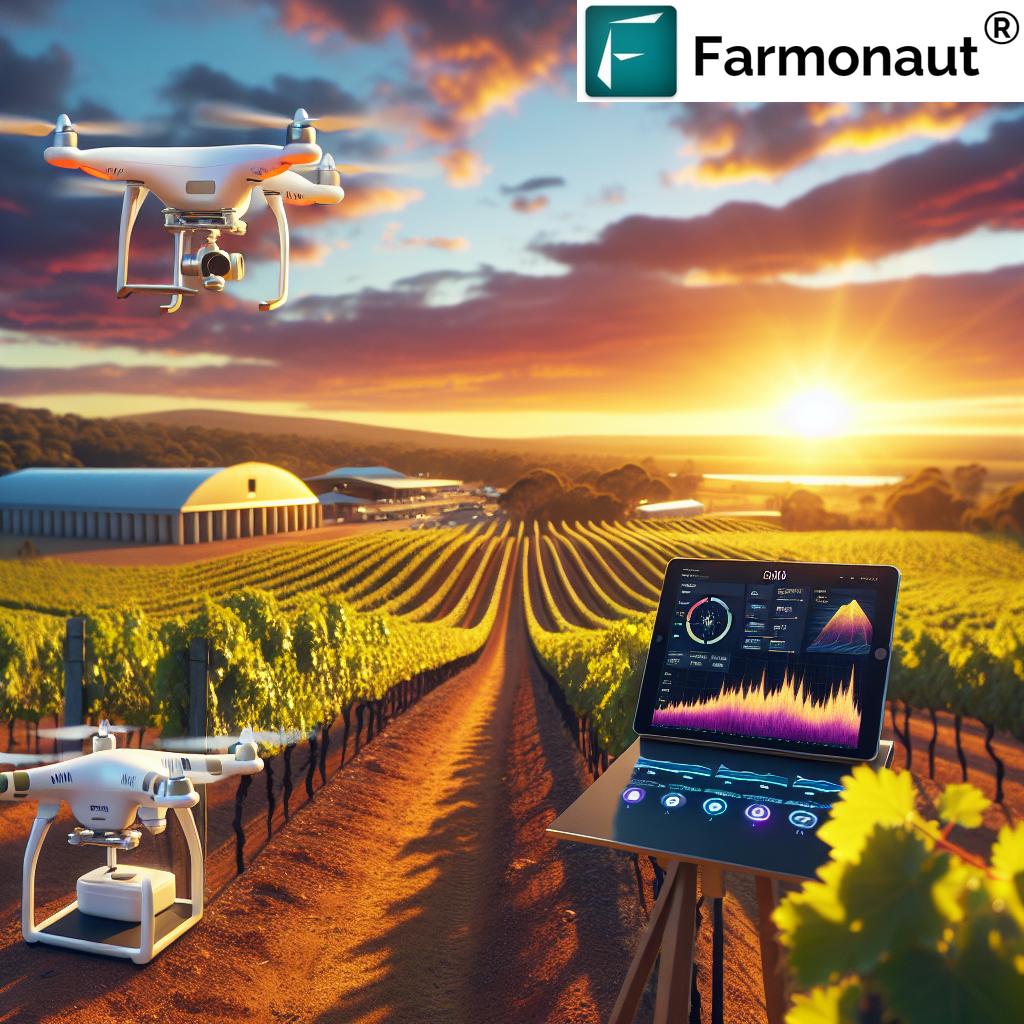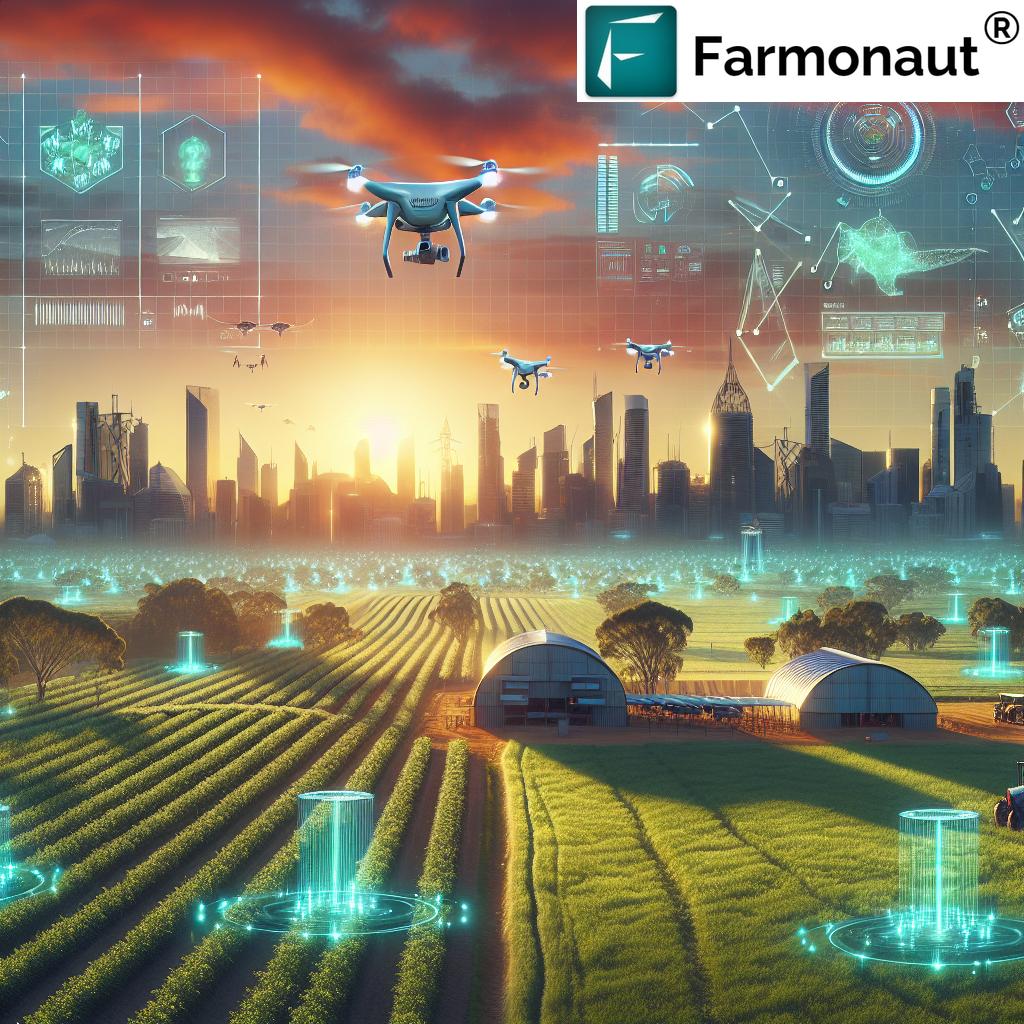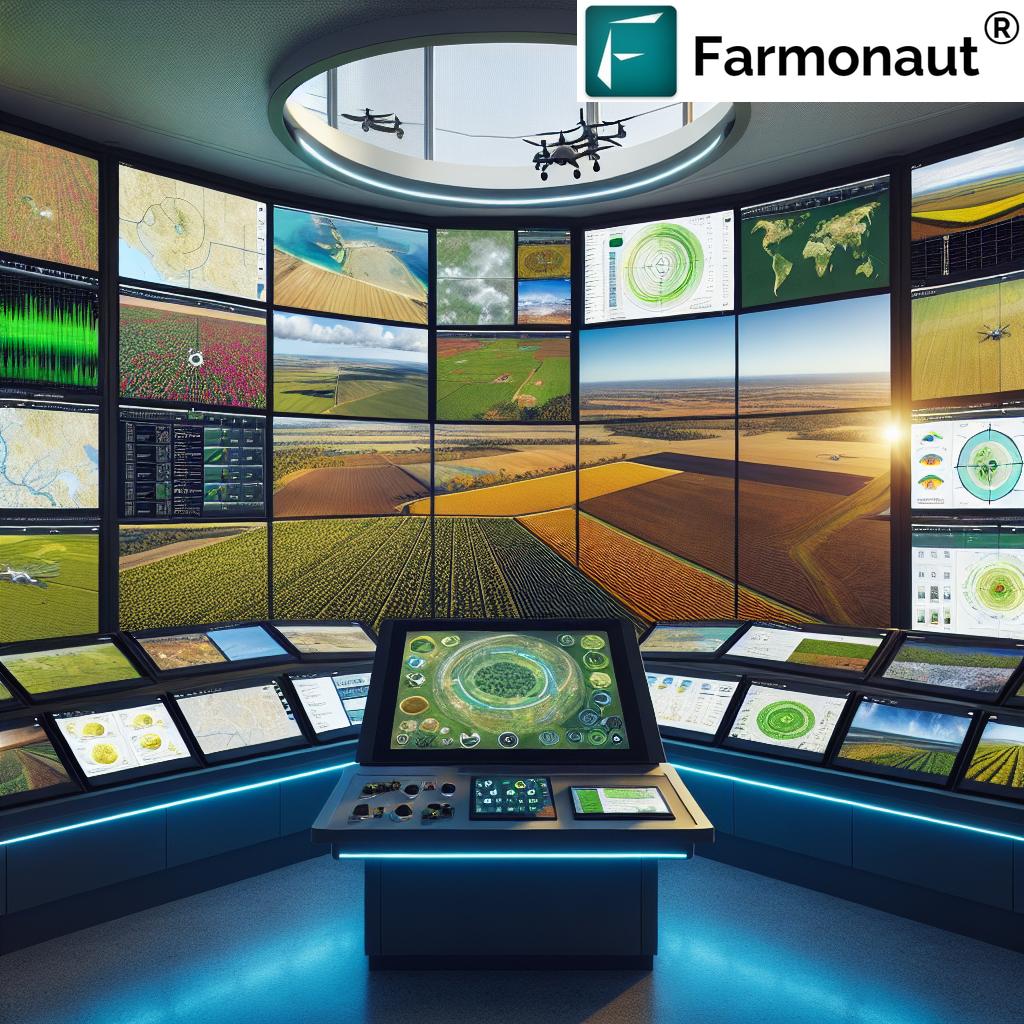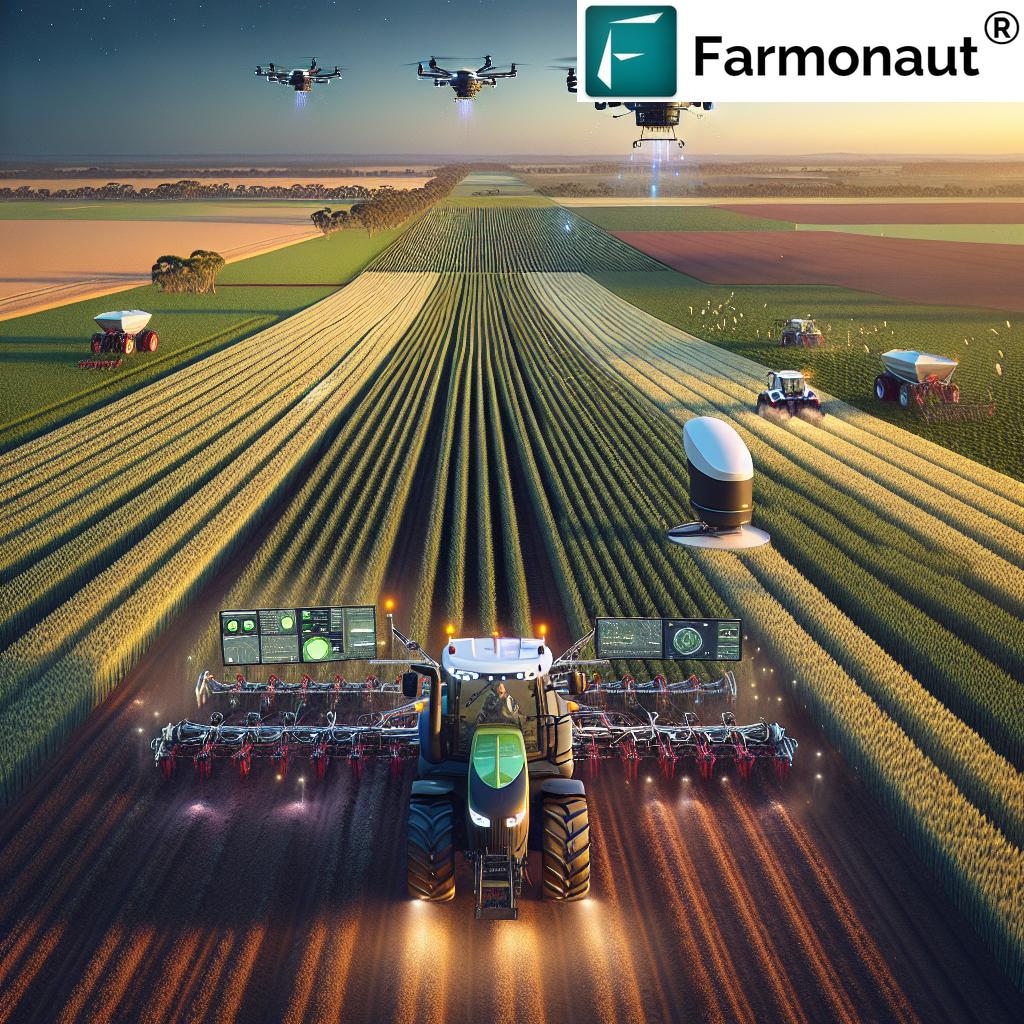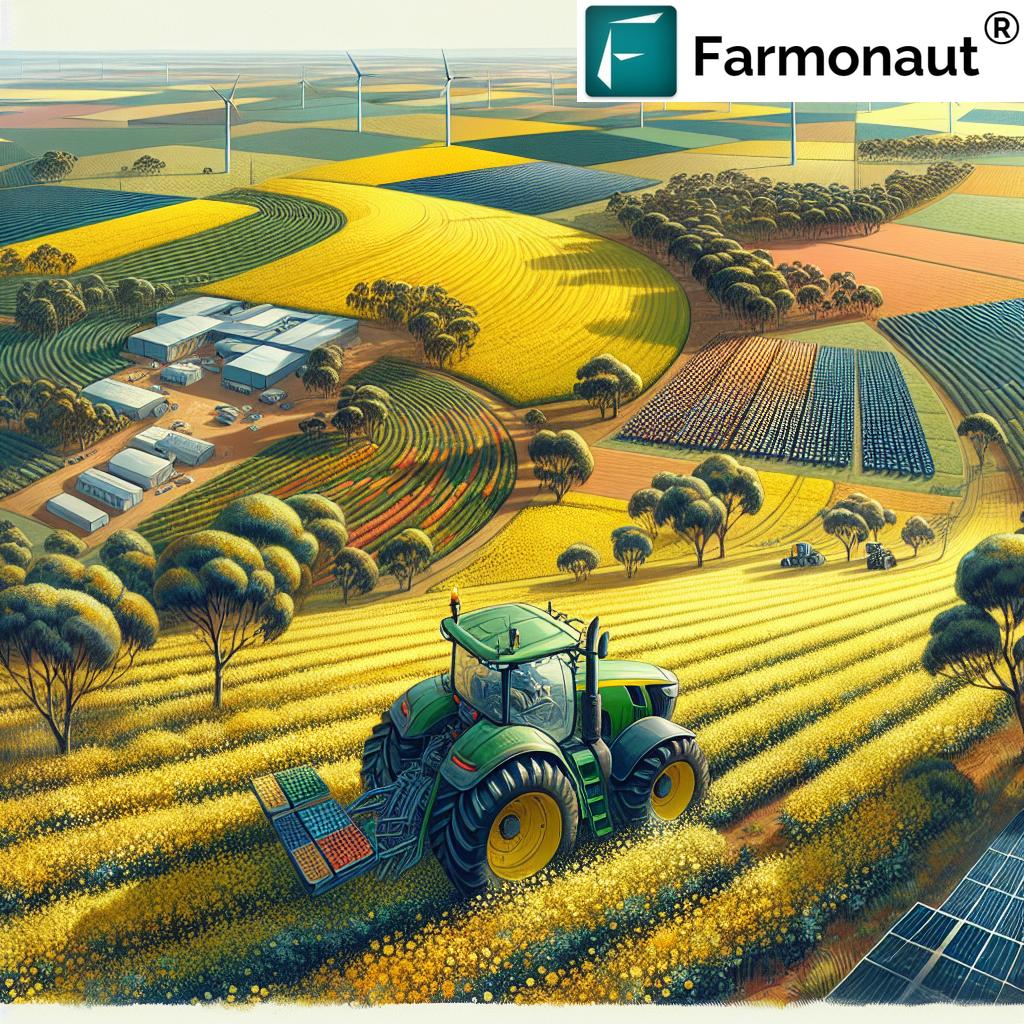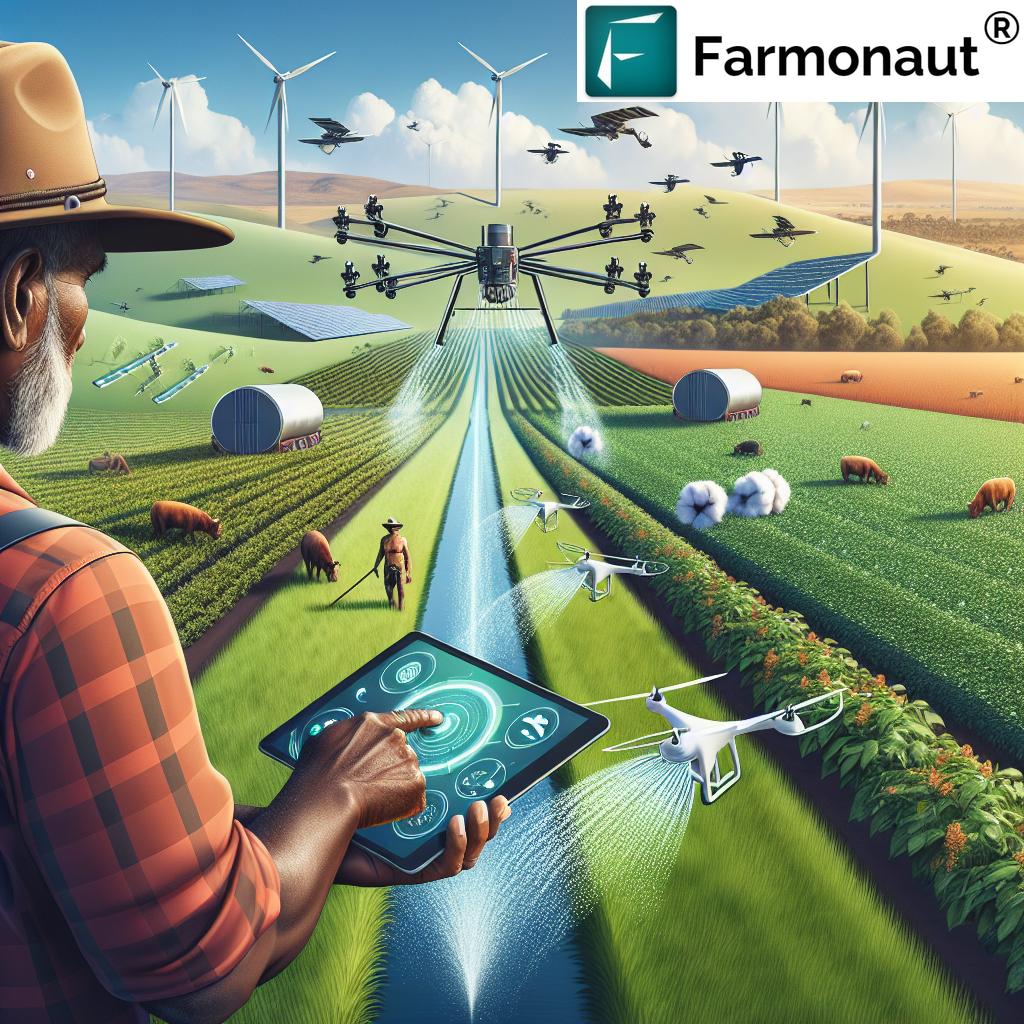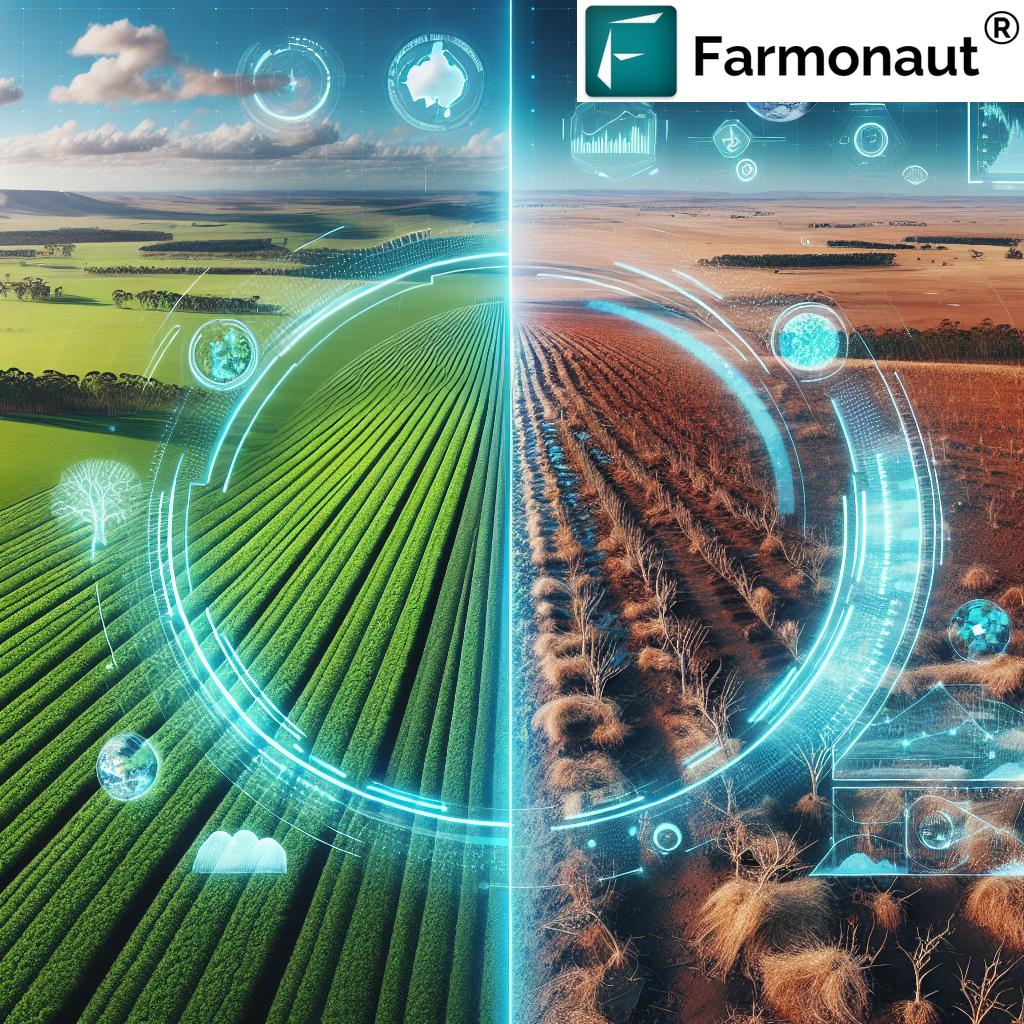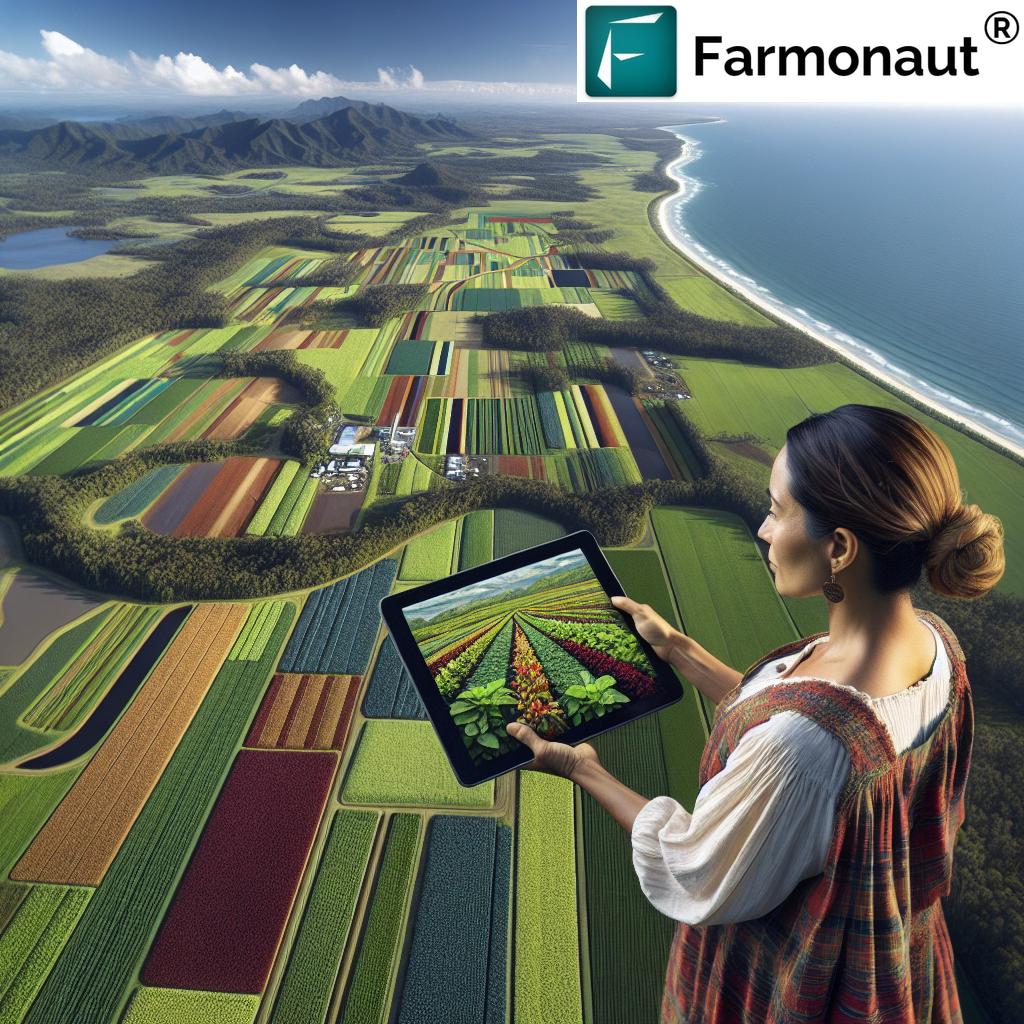Revolutionizing Mixed Broadacre Farming: Digital Management Solutions for Kojaneerup South’s Agricultural Productivity
“A 1020-hectare mixed broadacre farm in Kojaneerup South transformed from sheep farming to diverse cropping and livestock operations.”
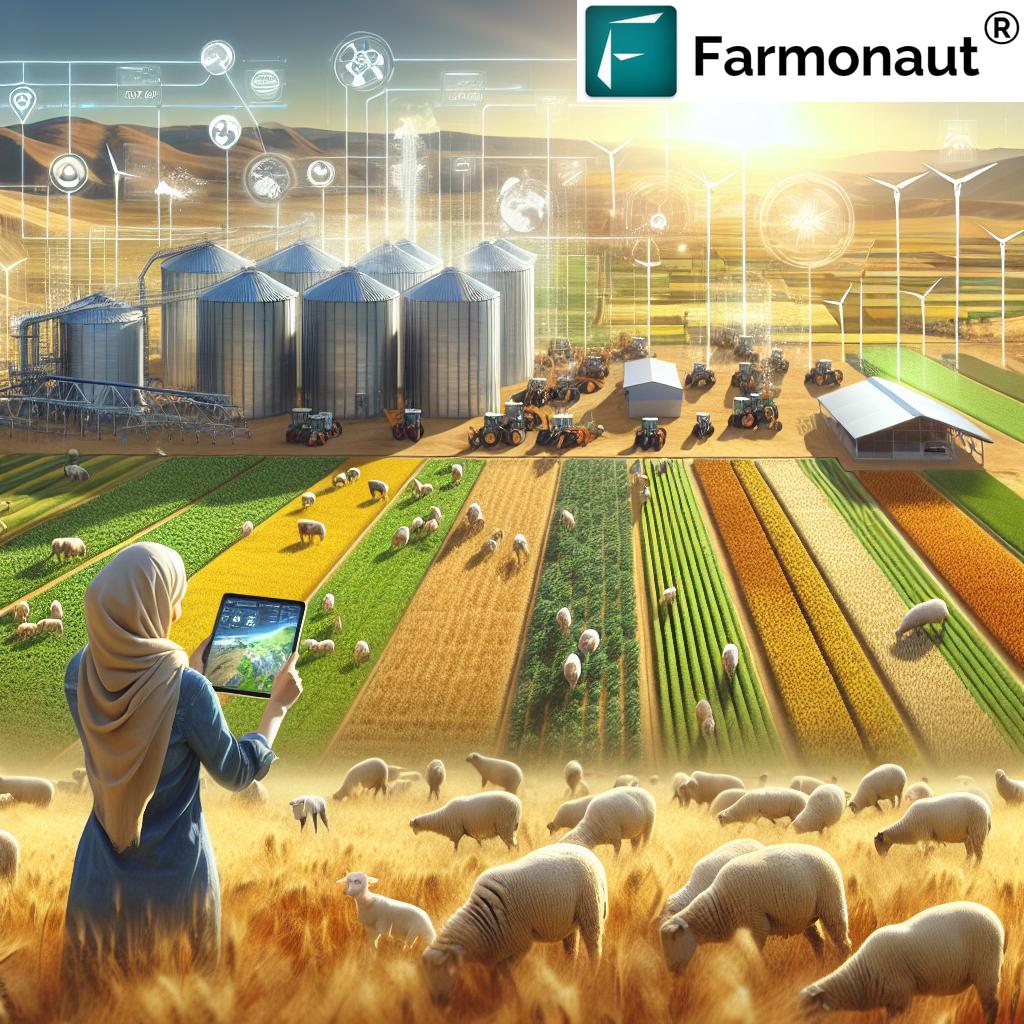
In the heart of Kojaneerup South, a remarkable transformation has taken place in the world of mixed broadacre farming. We’re excited to take you on a journey through the evolution of a multi-generational agricultural property that has embraced the future of farming. This 1020-hectare farm has not only adapted to changing times but has also become a shining example of how digital farm management and sustainable agriculture practices can revolutionize productivity in rural regions.
The Origins: From Sheep to Diverse Cropping
Our story begins with a traditional sheep farm, a common sight in many rural agricultural regions. However, as the agricultural landscape evolved, so did this property. The transition from solely focusing on sheep to embracing a diverse range of crops and livestock marks a significant shift in farming philosophy and practice.
- Initial focus: Sheep farming
- Current status: Diverse cropping and livestock operation
- Total area: 1020 hectares
This evolution reflects a broader trend in agribusiness, where diversification has become key to sustainability and profitability. By expanding their operations, the farm owners have not only spread their risk but also opened up new avenues for growth and innovation.
Embracing Crop Diversity and Rotation
One of the cornerstones of the farm’s success has been the adoption of innovative crop rotation techniques. This practice has led to impressive yields in wheat, barley, and canola – the triumvirate of crops that now define the farm’s cropping strategy.
Crop rotation is more than just planting different crops in succession; it’s a science that requires deep understanding of:
- Soil types for farming: Different crops thrive in different soil conditions
- Nutrient cycling: How each crop affects soil fertility
- Pest and disease management: Breaking cycles of crop-specific pests
- Water usage: Optimizing water efficiency across different crops
By implementing a well-planned rotation system, the farm has seen significant improvements in soil health, reduced reliance on chemical inputs, and enhanced overall agricultural productivity.
The Role of Precision Agriculture Technology
The leap from traditional farming methods to modern, data-driven agriculture has been pivotal in the farm’s success story. Precision agriculture technology has played a crucial role in optimizing every aspect of the farming operation.
Key technologies implemented include:
- GPS-guided machinery for precise planting and harvesting
- Soil sensors for real-time monitoring of moisture and nutrient levels
- Drone technology for crop health assessment
- Satellite imagery for large-scale field analysis
These technologies have allowed for more precise decision-making, reducing waste and maximizing yields. For instance, variable-rate technology enables the application of fertilizers and pesticides only where and when they’re needed, leading to cost savings and environmental benefits.
Infrastructure Improvements: The Backbone of Modern Farming
The journey to becoming a state-of-the-art mixed farming enterprise has involved significant farm infrastructure improvements. These upgrades have been crucial in supporting the expanded operations and implementing new technologies.
- Advanced fencing systems: Crucial for efficient livestock management and rotational grazing
- Water management solutions: Including efficient irrigation systems and water storage facilities
- Modern sheds and silos: For equipment storage and grain handling
- Upgraded machinery: To support precision farming practices
These improvements have not only enhanced efficiency but also contributed to better livestock management systems and overall farm productivity.
The Integration of Digital Farm Management
In today’s agricultural landscape, digital farm management tools have become indispensable. The Kojaneerup South farm has embraced these technologies wholeheartedly, leveraging them to make data-driven decisions and optimize operations.
Key aspects of digital farm management implemented include:
- Farm management software for record-keeping and planning
- Real-time monitoring of crop health and growth stages
- Predictive analytics for yield forecasting
- Integration of weather data for informed decision-making
These digital tools have revolutionized how the farm operates, allowing for more precise planning, better resource allocation, and improved risk management.
“Innovative crop rotation and precision agriculture techniques have led to impressive yields in wheat, barley, and canola on this farm.”
Sustainable Agriculture Practices: A Commitment to the Future
At the heart of the farm’s philosophy is a strong commitment to sustainable agriculture practices. This approach not only ensures the long-term viability of the farm but also aligns with growing consumer demands for environmentally responsible farming.
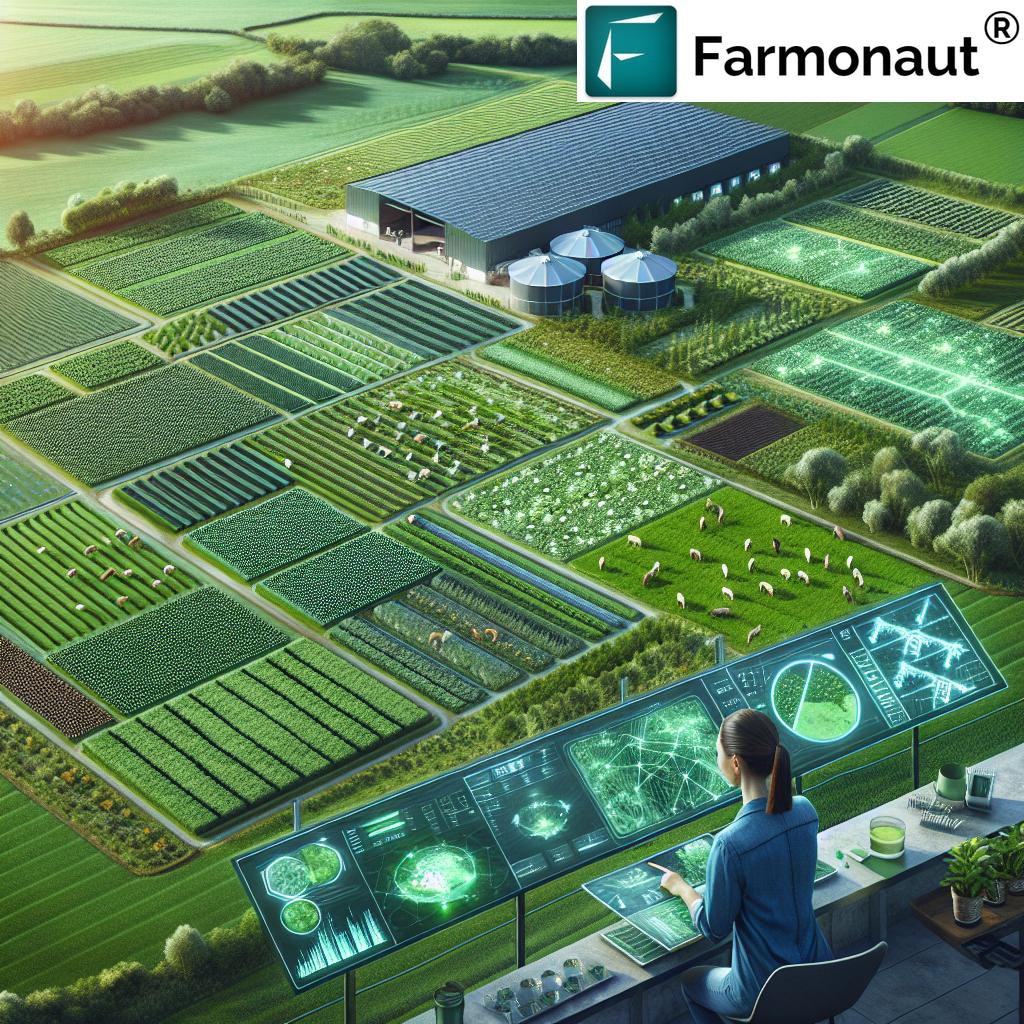
Key sustainable practices implemented include:
- Minimal tillage to preserve soil structure and reduce erosion
- Integrated pest management to reduce chemical use
- Cover cropping to improve soil health and biodiversity
- Efficient water use through advanced irrigation techniques
- Incorporation of renewable energy sources in farm operations
These practices not only benefit the environment but also contribute to the farm’s long-term productivity and profitability.
Leveraging Agtech Solutions for Enhanced Farming
The adoption of agtech solutions for farmers has been a game-changer for the Kojaneerup South property. These innovative technologies have brought unprecedented levels of precision and efficiency to farming operations.
Some of the key agtech solutions implemented include:
- Satellite-based crop monitoring systems
- AI-powered crop health analysis
- IoT devices for real-time field data collection
- Precision planting and harvesting equipment
These technologies have not only improved productivity but also helped in making more informed decisions, reducing waste, and optimizing resource use.
The Role of Farmonaut in Digital Farm Management
In the journey towards digital transformation, tools like Farmonaut have played a crucial role. Farmonaut’s satellite-based solutions offer a range of benefits for modern farmers:
- Real-time crop health monitoring
- Weather forecasting and alerts
- Yield prediction and analysis
- Resource management tools
By integrating Farmonaut’s technology, farmers can make data-driven decisions, optimize resource allocation, and improve overall farm productivity.
Explore Farmonaut’s solutions:
The Future of Mixed Broadacre Farming
As we look to the future, the Kojaneerup South farm stands as a testament to the potential of mixed broadacre farming when combined with modern technology and sustainable practices. The farm’s journey reflects the changing face of agribusiness in rural regions, demonstrating how traditional farming can evolve to meet the challenges of the 21st century.
Key trends shaping the future of mixed broadacre farming include:
- Increased integration of AI and machine learning in farm management
- Development of more resilient crop varieties through genetic research
- Greater focus on carbon sequestration and climate-smart agriculture
- Expansion of precision agriculture technologies
- Enhanced traceability and transparency in the food supply chain
By staying at the forefront of these trends, farms like the one in Kojaneerup South are well-positioned to thrive in the evolving agricultural landscape.
Conclusion: Embracing Change for a Sustainable Future
The story of the Kojaneerup South farm is more than just a tale of agricultural success; it’s a blueprint for the future of farming. By embracing digital technologies, implementing sustainable practices, and continuously adapting to change, this farm has not only increased its productivity but also ensured its long-term viability.
As we face global challenges like climate change, food security, and resource scarcity, the lessons learned from this farm’s journey become even more valuable. The integration of digital farm management, precision agriculture technology, and sustainable agriculture practices offers a path forward for farmers worldwide.
For those looking to embark on a similar journey of agricultural transformation, tools like Farmonaut provide an accessible entry point into the world of digital farming. By leveraging satellite technology and data-driven insights, farmers can take their first steps towards a more productive and sustainable future.
Explore Farmonaut’s API for developers:
Farmonaut Subscriptions
FAQ Section
Q: What is mixed broadacre farming?
A: Mixed broadacre farming is an agricultural approach that combines the cultivation of various crops with livestock rearing on large-scale properties. This diversified method allows farmers to spread risk and maximize land use efficiency.
Q: How has digital technology improved farm management?
A: Digital technology has revolutionized farm management by providing real-time data on crop health, soil conditions, and weather patterns. This enables farmers to make more informed decisions, optimize resource use, and increase overall productivity.
Q: What are some key sustainable agriculture practices?
A: Key sustainable agriculture practices include crop rotation, minimal tillage, integrated pest management, efficient water use, and the incorporation of cover crops. These practices help maintain soil health, reduce environmental impact, and ensure long-term farm viability.
Q: How does precision agriculture technology benefit farmers?
A: Precision agriculture technology benefits farmers by allowing for more accurate planting, targeted application of inputs like fertilizers and pesticides, and optimized harvesting. This leads to increased yields, reduced costs, and minimized environmental impact.
Q: What role do satellite-based solutions play in modern farming?
A: Satellite-based solutions, like those offered by Farmonaut, provide farmers with valuable insights into crop health, soil moisture levels, and weather patterns across large areas. This information helps in making timely decisions about irrigation, pest control, and harvest timing.
| Era | Primary Focus | Key Crops/Livestock | Technology/Infrastructure |
|---|---|---|---|
| 1950s-1970s | Sheep Farming | Sheep | Basic fencing, traditional shearing sheds |
| 1980s-1990s | Transition to Mixed Farming | Sheep, Wheat | Introduction of basic machinery, improved fencing |
| 2000s-2010s | Diversified Cropping | Wheat, Barley, Canola, Sheep | Modern machinery, initial precision agriculture tools |
| 2020s-Present | Advanced Mixed Broadacre Farming | Wheat, Barley, Canola, Sheep, Potential expansion into other livestock | Precision agriculture technology, digital farm management systems, advanced water management, sustainable practices |
This evolution of the Kojaneerup South farm showcases the remarkable journey from traditional sheep farming to a sophisticated mixed broadacre operation. By embracing new technologies, diversifying crops, and implementing sustainable practices, the farm has positioned itself as a leader in modern agriculture.





